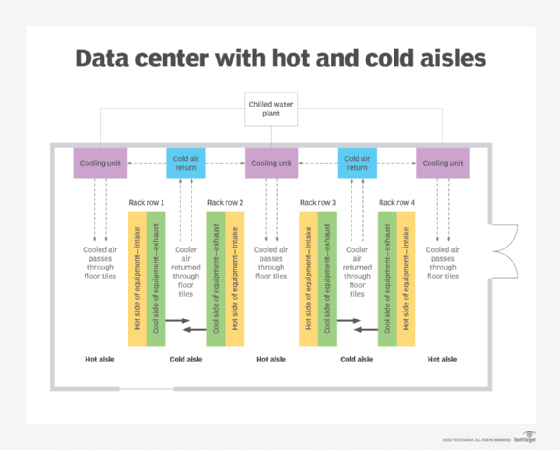
Getty Images/iStockphoto
Tips to build a data center airflow management strategy
Airflow in data centers is crucial for equipment health. While the hot aisle/cold aisle is popular, examine other options like side-to-side airflow and top-of-rack switches.
Cooling computing hardware with air requires good airflow management to maintain consistent temperatures. Data center equipment uses more energy when it is inefficiently cooled, and overheating can cause malfunctions and damage to equipment such as servers and storage devices.
Further, cool air is expensive to make, so it is crucial to efficiently manage airflow in a data center to keep IT equipment (ITE) at optimal temperatures for the best long-term performance. By effectively managing airflow, organizations can also expand the service life of their ITE.
Hot aisle/cold aisle strategy
The hot aisle/cold aisle cabinet arrangements became the recommended standard in the 1980s. This strategy advises data center admins to use filler panels in unused rack cabinet spaces and seal all other air gaps. Aisle containment is the newer extension of hot aisle/cold aisle design that further enhances cooling effectiveness and energy efficiency by separating cold airflow from exhaust air.
This is effective for the vast majority of ITE, which is cooled with industry-standard front-to-back airflow. Technical Committee 9.9 of ASHRAE recommended the airflow standard in 2004.
But not every piece of ITE follows this practice. Two nonstandard airflow situations are the most prevalent: large network switches with side-to-side airflow and top-of-rack (TOR) switches mounted backward to make connections accessible.
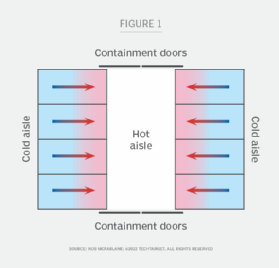
Side-to-side airflow for large network switches
There are two issues with side-to-side airflow designs:
- Warm air is discharged back into the cold aisle, which increases the inlet temperatures of nearby equipment.
- When switches are mounted adjacently, the warm discharge air from one switch becomes the inlet air for the next one and so on, with the temperatures getting progressively higher as air cascades from switch to switch.
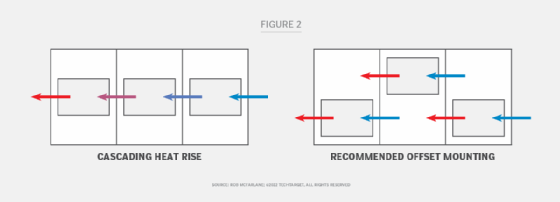
There are two options to mitigate these issues.
Switch manufacturers recommend vertically staggering adjacent chassis so the hot air from one doesn't enter the intake of the next. However, this is not always a good operational approach. It can require mounting large, heavy switches quite high, and it still discharges warm air back into the cold aisle, which is not a recommended practice.
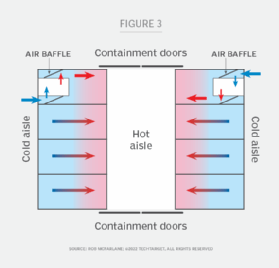
Most cabinet manufacturers offer accessory air baffles to redirect intake and discharge air so the two are separated and hot air discharges into the hot aisle. This usually requires wider cabinets to accommodate the air diverters or even sidecars that contain the air-directing baffles. The selection of specific cabinets and internal air diverters depends on the specific switches to be installed, but wider cabinets are always necessary.
The fans in computing hardware are small relative to air conditioner fans. If air diverters are too close to the discharge, they create static pressure that causes the fans to consume more energy and may even result in insufficient airflow through the hardware.
Top-of-rack switches
TOR switches are a common method of minimizing cabling between rack cabinets and core switches. However, the switches purchased for TOR use are generally standard 1U or 2U stackables, with airflow from the front connector side to the rear. This is practical for building larger switch stacks, but if mounted normally in a TOR application, the connectors can be inconvenient since server connectors are at the rear. It is common to mount these switches reversed so the connectors face the rear of the cabinet.
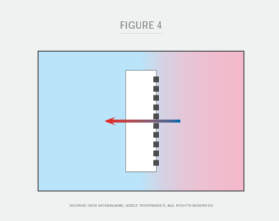
Further, they are usually mounted inside the cabinet -- behind the cabinet front -- for easier access to the connectors. This means they are drawing hot air from the hot aisle and discharge warmer air back into the cabinet. This warmer air then recirculates back to the front. This is not ideal for the service life of servers, storage and other equipment.
There are two options to reduce this issue.
Most switch manufacturers provide an optional airflow direction. Organizations can order switches this way for TOR installation or field-modify them with reversed fan kits. This solves the airflow direction problem, but the switch still pulls hot air in from inside the cabinet.
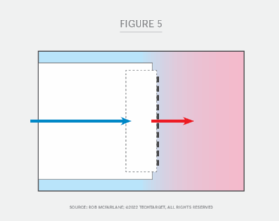
For the best installation, devices are available from several manufacturers to house the TOR switches and extend their intakes so they pull cool air in from the fronts of the cabinets.
These adapters, offered under various trade names, are switch-specific, so be sure to know the exact switch type before ordering the adapters.
Since data centers are not designed to a common standard, it's important to be cognizant of each device's airflow pattern and take the steps necessary to maximize its cooling effectiveness. Manufacturers of cabinets and ITE accessories can provide guidance to select the right components.
